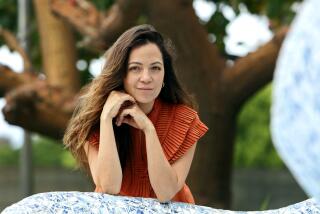MUSIC REVIEW : A Versatile Andre Previn Plays, Conducts at Hollywood Bowl
Last Tuesday, two Andres graced the sphere-and-speaker-laden shell of Hollywood Bowl--Watts and Previn. This week, one found two Previns amid the acoustical clutter--the conductor and the pianist.
Both turned out to be in good form.
In what served as yet another dress rehearsal for the Japan tour of the Los Angeles Philharmonic, which begins Sept. 25 in Tokyo, Previn did double duty in Mozart’s lofty C-minor Piano Concerto. Then he returned to the podium for the mighty flash of Tchaikovsky’s Fourth Symphony.
Other pianists--especially those who can concentrate exclusively on the keyboard challenge--may play Mozart with greater delicacy than does Previn. Others certainly find greater drama and pathos in the agitation of the outer movements.
There is more than one way to achieve Mozartean glory, however, and Previn’s way proved eminently convincing on this occasion. He stressed poise and clarity, grace and fluidity. In the process, he avoided extremes of expression, tempo and dynamic accent.
Without fuss or furor, he put the rhetoric in logical perspective. His no-nonsense approach--bolstered by technical facility--conveyed simple strength throughout. In the especially memorable larghetto, his limpid tone reinforced elegance as well as eloquence.
Even when his hands were otherwise occupied, moreover, he managed to enforce momentum and sustain cohesion with his ultra-attentive orchestra.
The cadenzas, Previn’s own, were models of inventive discretion.
His tendency to understate emotional outbursts also ensured taste and tact in the Tchaikovsky symphony. At the same time, it diminished the inherent elements of brooding romantic tragedy. Although one can debate the stylistic authenticity of Previn’s relatively abstract interpretation, there is no denying its impact.
The opening andante introduced a carefully defined color spectrum and increasingly propulsive flourishes impervious to the incessant, high-pitched beep of some undefined sonic invader. The gentle andantino survived some rude aeronautical intrusions. The pizzicato ostinato of the scherzo was precisely articulated and sensitively shaded, and the final allegro built inexorably to a climax more notable for contained brilliance than for cathartic excitement.
It was fine. Tchaikovsky doesn’t always have to gush, weep and roar.
To open the program, Previn offered another old specialty, Debussy’s “Prelude a l’apres-midi d’un faune.” The fragile vapors threatened to dissipate in the vast open spaces. Nevertheless, much of the poetic sensuality and subtle languor survived.
An audience of 9,923 clapped politely when it was sure the Debussy had ended. Wild applause could not be resisted after the flamboyant movements within the Tchaikovsky (the composer probably would have been pleased). Everyone responded to Mozart’s introspection with appropriate silence.
More to Read
The biggest entertainment stories
Get our big stories about Hollywood, film, television, music, arts, culture and more right in your inbox as soon as they publish.
You may occasionally receive promotional content from the Los Angeles Times.










